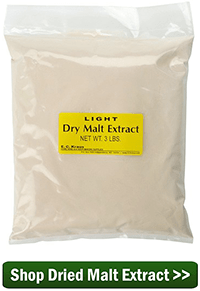 A large part of the thrill of home brewing is discovering how your batch turns out several weeks after brewing it. At the same time, it’s nice to be able to predict with some degree of certainty what the final beer will be like.
A large part of the thrill of home brewing is discovering how your batch turns out several weeks after brewing it. At the same time, it’s nice to be able to predict with some degree of certainty what the final beer will be like.
Original gravity (abbreviated OG) plays an important role in determining what the end result of your home brewing efforts will be. The gravity, or concentration of sugars in the wort, has a major effect on the final beer’s alcohol content. On a related note, the concentration of the wort can also have a profound impact on the color, flavor, and mouthfeel of the finished brew.
While we all know that home brewing doesn’t always go the way we plan, there are a few things we can do to help assure that we are hitting our target gravity:
- Measure your mash efficiency. If you’re an all-grain brewer, mash efficiency will have an enormous impact on your brew’s OG. Calculating mash efficiency just requires some basic math. Take good notes so that you can make an educated guess about what your mash efficiency will be, and then plan your beer recipe accordingly. At the end of the mash, take hydrometer readings of the runnings to make sure you’re on target. If you’re off for some reason, you may be able to make adjustments later in the process to compensate for not hitting the target gravity.
- Watch your evaporation rate. Pay attention to how much volume you tend to lose when boiling wort. This can be an important factor when trying to hit a target gravity. Again, take notes and try to standardize the process each time you brew. A lot of homebrew recipes out there are based on a preconceived evaporation rate (or may ignore it completely). If you know that you tend to boil off a certain volume over a one-hour boil, you should start with that much more water or wort at the beginning of the boil to compensate.
 Supplement with malt extract or sugar. If you’ve missed your mash efficiency and you end up with a low original gravity, don’t fret. You can add additional fermentables to the brew kettle or to the fermenter. For this reason it’s a good idea to keep some light dried malt extract, corn sugar, or cane sugar around the house. These can be stirred in at the end of the boil. Extra fermentables added to the fermenter should be fully dissolved in boiled water and then cooled before mixing. Read on for a calculation that helps with blending, and keep in mind that blending unhopped malt extract into wort may reduce the IBUs of the final beer.
Supplement with malt extract or sugar. If you’ve missed your mash efficiency and you end up with a low original gravity, don’t fret. You can add additional fermentables to the brew kettle or to the fermenter. For this reason it’s a good idea to keep some light dried malt extract, corn sugar, or cane sugar around the house. These can be stirred in at the end of the boil. Extra fermentables added to the fermenter should be fully dissolved in boiled water and then cooled before mixing. Read on for a calculation that helps with blending, and keep in mind that blending unhopped malt extract into wort may reduce the IBUs of the final beer.
- Dilute, but be smart about it. Overly concentrated wort can be diluted with clean, filtered, sterile water. In fact, many extract recipes call for brewers to “top off with enough water to get five gallons of wort.” That’s fine for beginners, but if you ar serious about hitting your target gravity, you should first calculate how much water to add. For example, if you want to use water to dilute four gallons of 1.060 gravity wort down to 1.050, use the following equation:
GravityA*VolumeA + GravityB*VolumeB = GravityC(VolumeA + VolumeB)
1.060(4) + 1.0(VolumeB) = 1.050(4+VolumeB)
Solving for VolumeB, use 0.8 gallons of water to dilute the wort to 1.050 OG. Of course, you may well decide that you’d rather have more beer at a lower gravity than less beer at a higher gravity. I know, it’s a tough decision!
Regardless of how you go about hitting your target gravity, the techniques above are sure to help you become a more consistent and accurate brewer.
—–
David Ackley is a beer writer, brewer, and self-described “craft beer crusader.” He is a graduate of the Oskar Blues Brew School in Brevard, NC.

This tip article would be great for the wine making group, if jut reworded in winemaking terms. If this has already done, please send me the article..